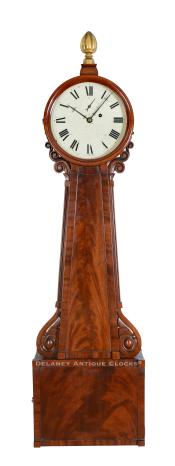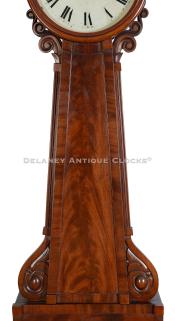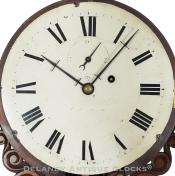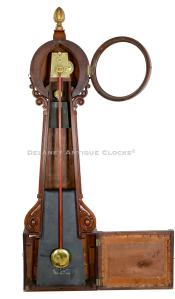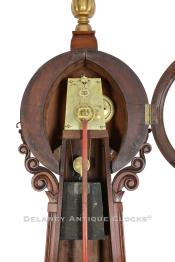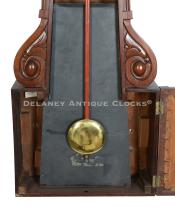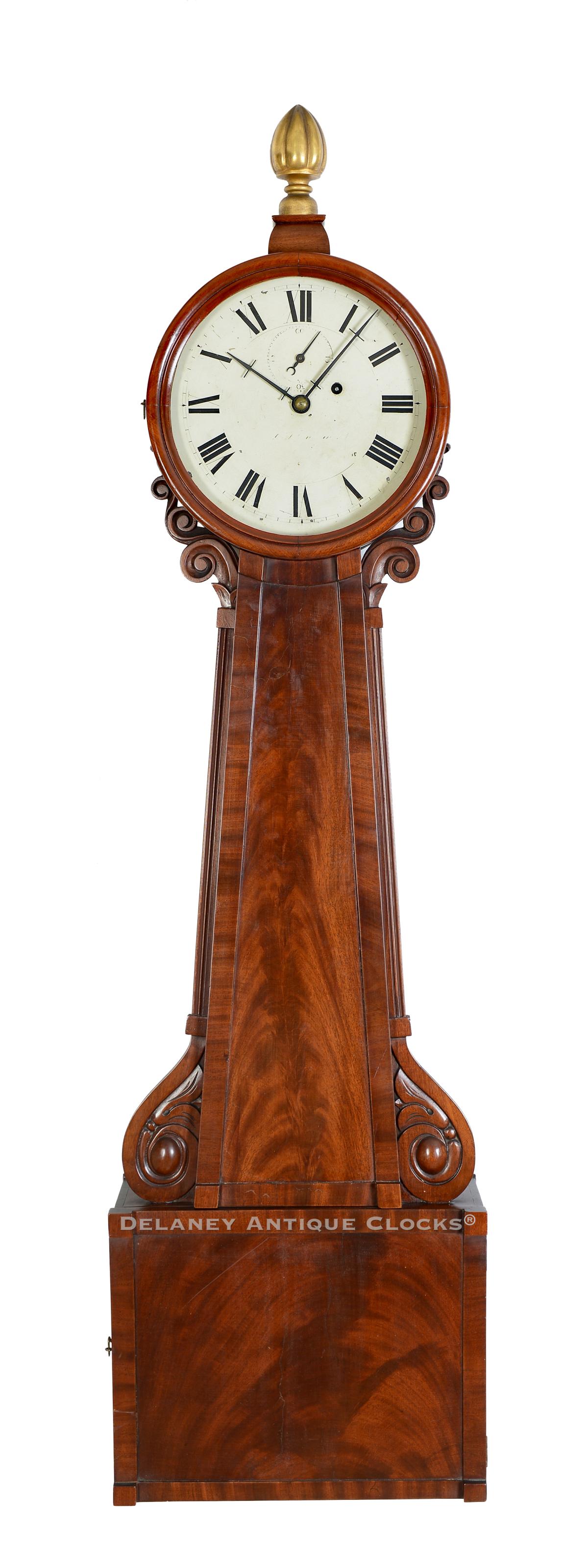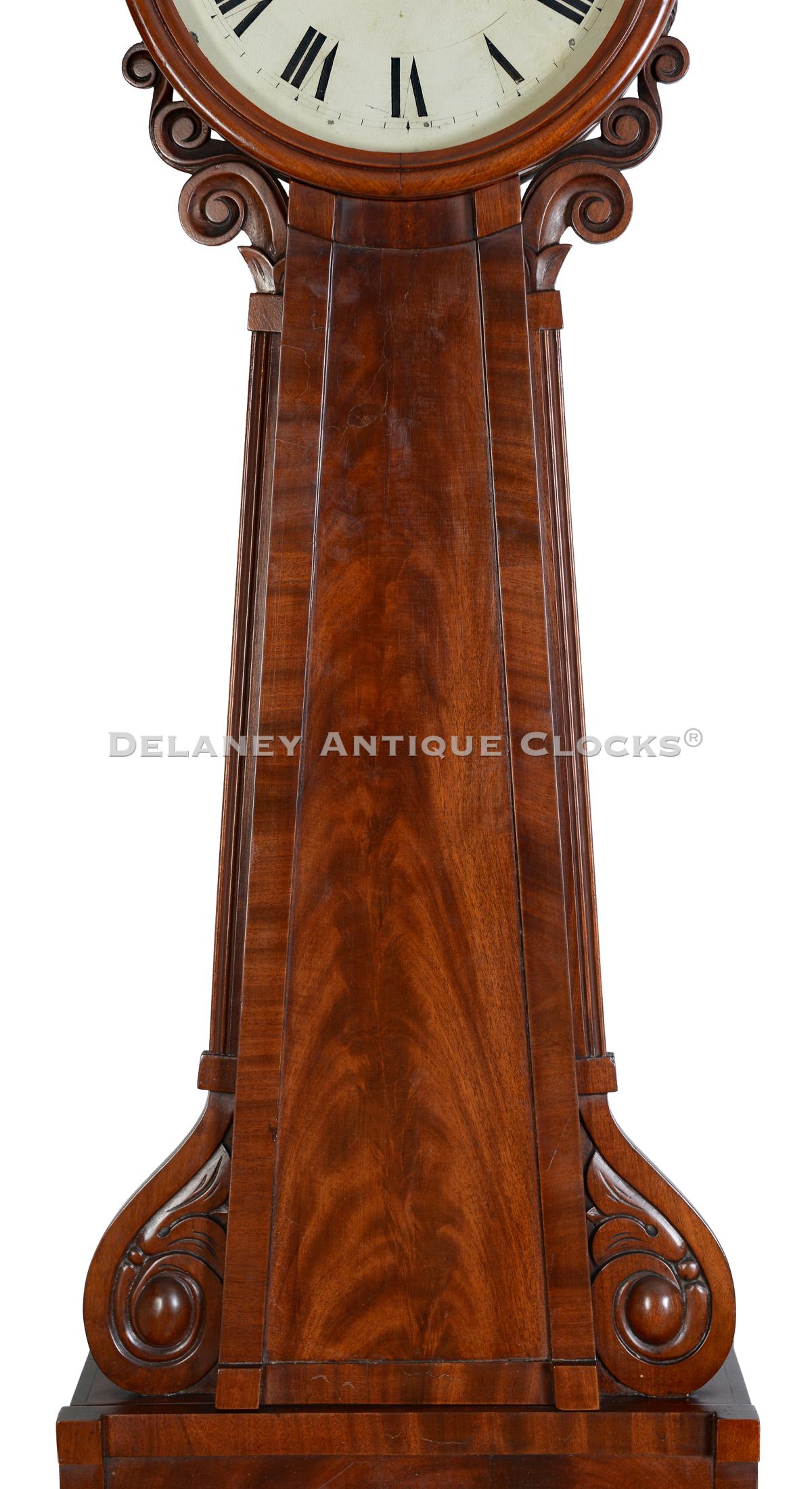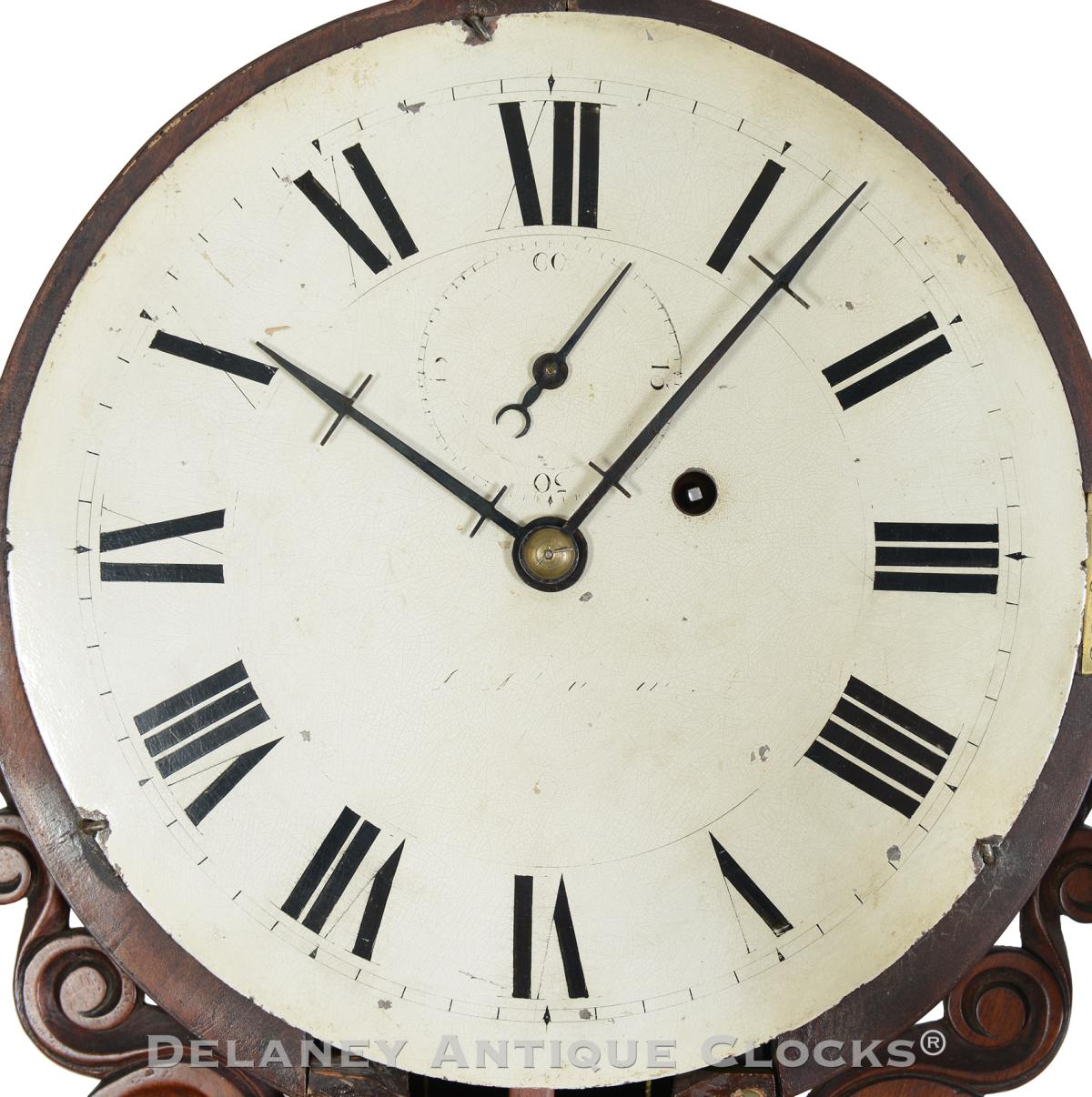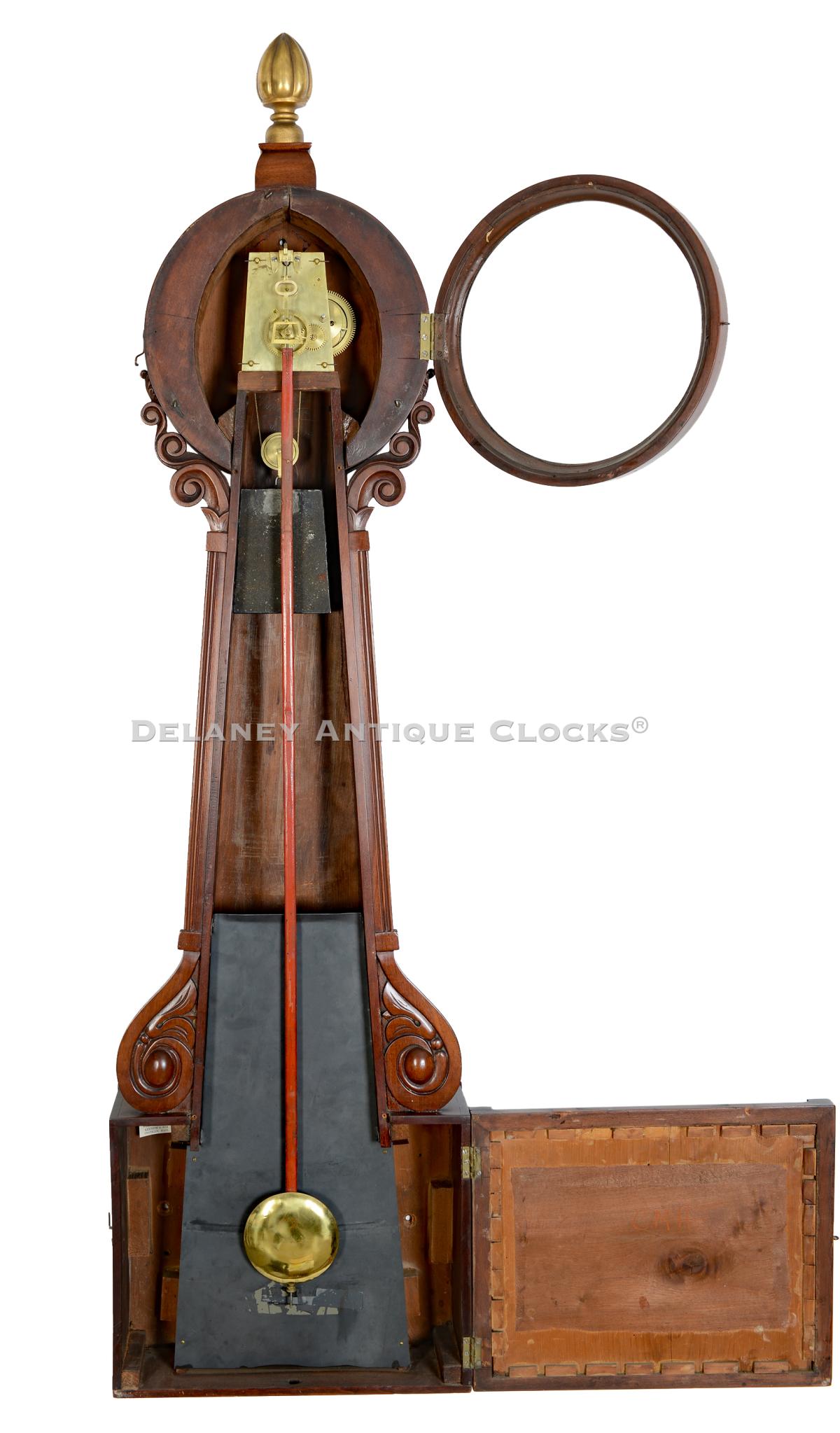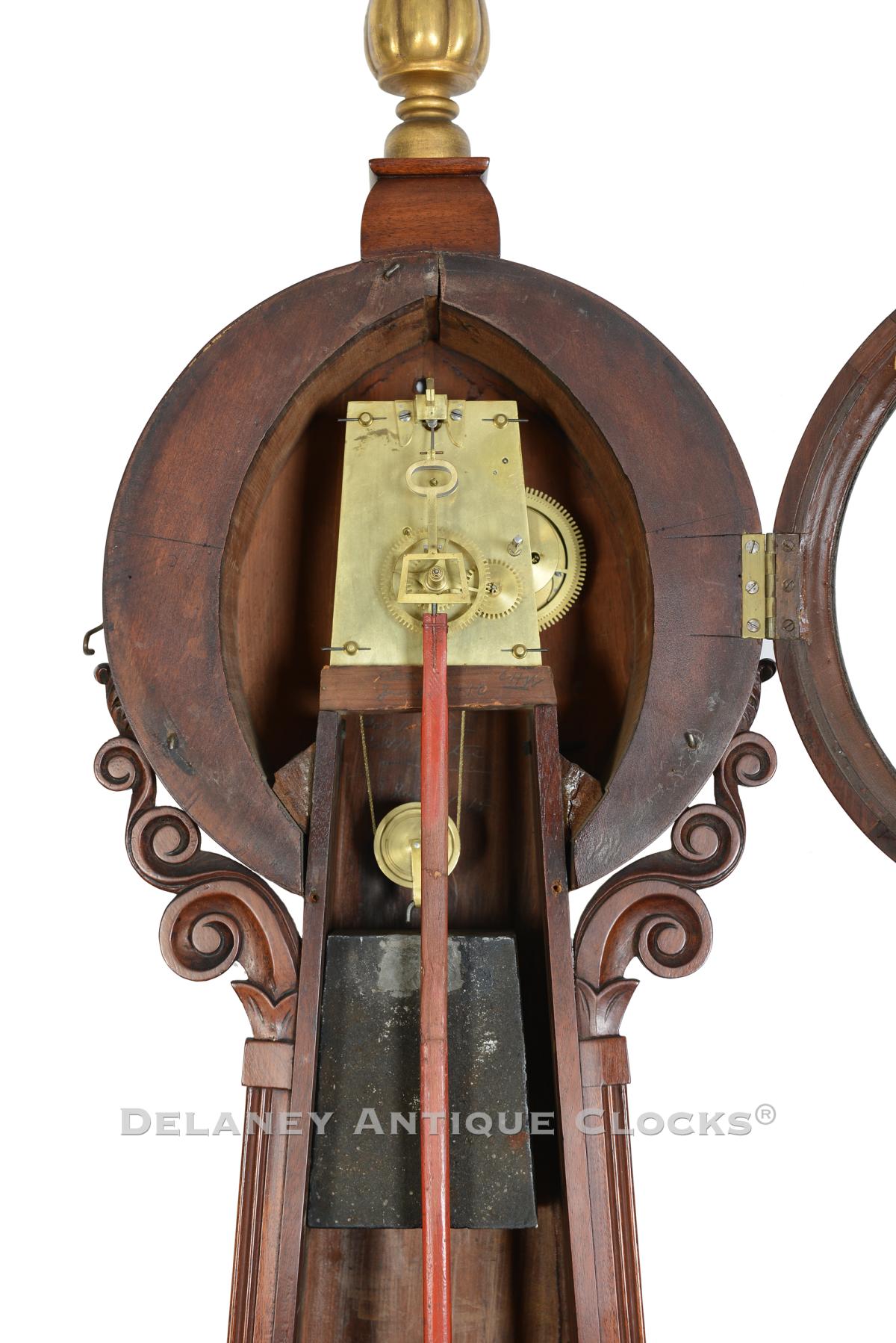This extraordinary wood-front Regulator was made by Joseph Nye (J.N.) Dunning, one of Vermont’s most famous clockmakers. Dunning made this clock during his career in Burlington, Vermont. 224092.
This impressive wall timepiece or regulator is in excellent condition. This example is signed on the dial by the Maker, J. N. Dunning.
The renowned Roxbury, Massachusetts clockmaker Simon Willard was the first in America to produce a timepiece built to this scale. This oversized timepiece format is loosely based on Simon’s 1802 patent for the improved timepiece. This version, constructed with accuracy or precision in mind, became popular in later years. They were used as a time reference and coveted by repairmen, watchmakers, and railroad firms. Regulators were made in significant numbers by clock companies that began with Howard & Davis and the E. Howard Clock Company in Boston later included George Jones and Seth Thomas.
This fabulous case represents the most attractive of the forms. The case is constructed in mahogany, vibrant mahogany veneers, and New England white pine. An older refinish of the cabinet’s exterior surfaces enhances the exuberant wood grain patterns intentionally selected to decorate the case.
At the top of the case is an attractive carved wooden finial. This three-dimensional finial is finished in gilt and is well formed, exhibiting good detail and depth. It is mounted onto a finial plinth at the top of the case.
The dial bezel is decoratively turned out of mahogany. It is fitted with glass, which protects the dial and hands. It hinges on the right and looks in place with a hook-and-eye lock system. The bezel opens to access the finely crafted steel hands and the painted iron dial. This dial is signed “J. N. Dunning” across the center. A segmented minute ring frames the Roman-style hour numerals. This dial also features a seconds register and corresponding seconds pointer.
Carved wooden sidearms visually cradle the head of the clock. These are fantastic. They are an exciting departure from the typical brass versions usually found in this location on smaller examples. Their creation demonstrates the cabinetmaker’s willingness to experiment and try something different. Concentric curly cues transition to reeded runs that terminate in additional carved details in a reverse curve. The tapered throat and lower rectangular door are constructed with flat frames cross-banded with veneer. The flat runs terminate in blocked corners. Both frames are fitted with glass wooden panels. These are backed in white pine and veneered with crotch mahogany veneers. The grain patterns are vibrant. Remarkably, this simple yet effective decoration has survived in fantastic original condition.
The time-only weight-driven movement, a testament to the masterful craftsmanship of its time, is brass construction. Fully wound, it is designed to run for eight days. The heavy brass trapezoidal-shaped plates are held together with four turned pillars or posts. The movement is secured to the backboard, with three screws from the back of the case threaded into the backplate. This movement is also supported on a wooden seatboard that rests on the rail extensions. These are the boards that make up the sides of the case. The gearing is finely made and is supported by hardened steel shafts. The teeth in the gear train are deeply cut. The escapement is a recoil. The great wheel is fitted with a retaining or maintaining power wheel or gear. This is a device that maintains power on the great wheel while in the process of winding this clock. This has two positive effects. First, it prevents the loss of impulse to the time train while winding the mechanism. Secondly, it protects the teeth on the escape wheel due to the large size and weight of the 8-inch pendulum bob. The pendulum hangs from a butterfly-bridge suspension from a bridge mounted to the front of the movement. The meter-long pendulum is constructed with a thinly painted red wooden rod. Wood was used because it is insensitive to changes in temperature. Its length remains constant. This rod supports a heavy brass-faced bob that measures 5.5 inches in diameter. A large brass-rating nut is used to adjust the length. This pendulum beats seconds or sixty beats a minute. Clocks designed like this one are generally excellent timekeepers and vary only seconds a month.
This regulator case, a grand piece measuring approximately 54.75 inches long, 14.5 inches wide at the bottom door, and 5 inches deep, will make a stunning addition to any collection or space.
J N Dunning made this regulator circa 1830.
To my knowledge, only three of these Dunning Regulators have been identified.
Inventory number 224092.
Joseph N. Dunning was born in Brunswick, Maine, on January 2nd, 1795, and died in Burlington, Vermont, on December 14th, 1841. He was first a journeyman working for Lemuel Curtis in Concord before they formed an informal partnership before 1820. In 1821, they formally advertised their partnership, and both men moved to Burlington, Vermont. It was during this period Burlington was experiencing an economic boom. There, they became two of Vermont's most prolific manufacturers of wall timepieces. They also sold watches and jewelry. In 1832, the partnership dissolved, and Dunning continued to work on his own. He died bankrupt at the age of 46.
For a further discussion on Vermont-made timepieces and the clockmaker Joseph Dunning, please read Paul Foley's book, "Willard's Patent Timepieces."

